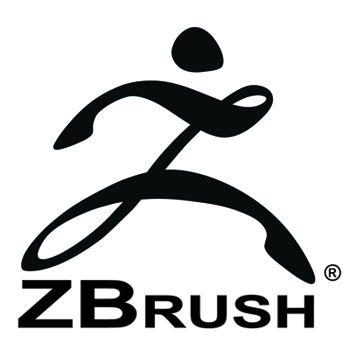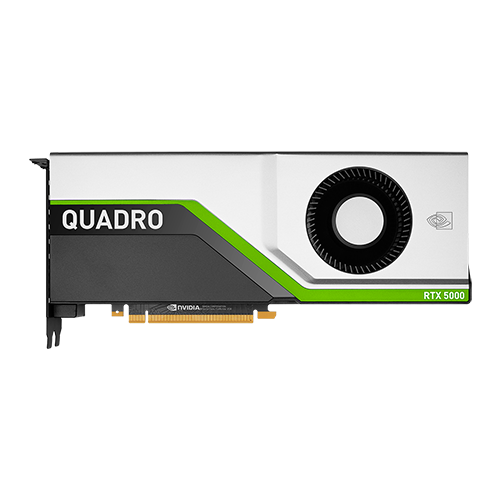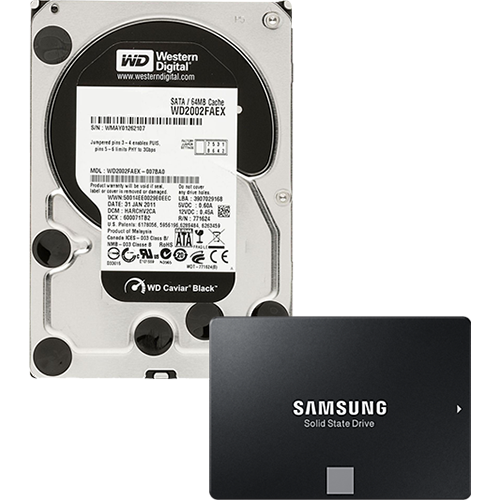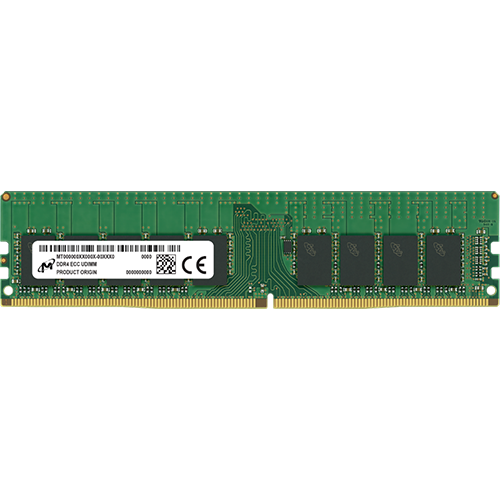
ZBrush
ZBrush is a digital sculpting tool that combines 3D/2.5D modeling, texturing and painting. It uses a proprietary "pixol" technology which stores lighting, color, material, and depth information for all objects on the screen. The main difference between ZBrush and more traditional modeling packages is that it is more akin to sculpting.
Hardware Recommendations
 Processor
Processor
3D Modeling
Building meshes, extruding polygons and other 3D modeling tasks are single-threaded, meaning they only utilize one CPU core. If using this software mostly for modeling, we recommend a 6 to 8 core processor with a high turbo boost frequency (4.5 GHz and greater).
Animation
Like 3D modeling, animation is also single-threaded. Therefore a processor with high clockspeed and 4 to 6 cores is also recommended.
Rendering
While 3D modeling and animation only utilize one CPU core, rendering is a highly multi-threaded task and therefore a high amount of CPU cores will provide better performance.
 Graphics
Graphics
As technology advances, applications progressively increase graphics card acceleration. ZBrush achieves the largest boost in performance from the processor and the demand on the graphics card is relatively light, so even a mid-range graphics card will be adequate. We recommend at least 8GB VRAM for signifcant raw performance and powering multiple 4K monitors.
NVIDIA GeForce RTX 4080 16GB (highest performance)
NVIDIA GeForce RTX 4070 12GB (most popular)
NVIDIA GeForce RTX 4060 8GB
 Storage
Storage
We recommend a NVMe SSD for the operating system, applications and project files. 1TB is the most common capacity for ZBrush workstations. 1TB is fine if your projects are moderately sized. 2TB is recommended if your projects are large and you will you will use the workstation for a variety of professional applications.
If your projects are complex, are running multiple applications as the same time, and you want to maximize performance, we recommend two SSDs:
- Primary NVMe SSD: operating system and applications
- Secondary NVMe SSD: dedicated to active projects
For storage or backup, we recommend a SATA SSD or Hard Drive.
M.2 NVMe Gen4 SSD performs at ~5,000MB/s
2.5-inch SATA SSD performs at ~500MB/s
3.5-inch SATA Hard Drive performs at ~250MB/s
 Memory
Memory
In general, 4GB of RAM per CPU core is recommended. For example, if you select a single 12-core processor, 32GB will suffice for basic tasks or 64GB for more demanding workloads.
Configuration Recommendations
HP Z8 G5 Fury Workstation
$18,600
HP Z6 G5 A Workstation
$15,100
HP Z6 G5 Workstation
$9,850
HP Z4 G5 Workstation
$7,450
HP Z2 G9 Tower Workstation
$4,350
HP Z2 G9 Tower Workstation
$3,900
Hardware Reference Recommendations
- Feb 2020 by
Pixologic
System Specs
Running additional applications on this system?
The recommended components and configurations provided on this page are specific to this software. If you plan on running other applications, view our recommendations for them as well and choose a configuration that best suits the needs of the application requirements collectively. Feel free to contact us for further assistance.
 3ds Max
3ds Max  Act-3D
Act-3D  After Effects
After Effects  AMBER MD
AMBER MD  ANSYS
ANSYS  ARCHICAD
ARCHICAD  Arnold
Arnold  Audition
Audition  AutoCAD
AutoCAD  Blender
Blender  BodyPaint 3D
BodyPaint 3D  Catia
Catia  Cinema 4D
Cinema 4D  Corona Renderer
Corona Renderer  DaVinci Resolve
DaVinci Resolve  Digital Performer
Digital Performer  DIGITS
DIGITS  Flame
Flame  Fusion
Fusion  Harmony
Harmony  Hauptwerk
Hauptwerk  Houdini FX
Houdini FX  Illustrator
Illustrator  InDesign
InDesign  Inventor
Inventor  Keyshot
Keyshot  Lightroom
Lightroom  Live
Live  Mari
Mari  Maxwell
Maxwell  Maya
Maya  Media Composer
Media Composer  Modo
Modo  MotionBuilder
MotionBuilder  Mudbox
Mudbox  Navisworks
Navisworks  Nuke
Nuke  OctaneRender
OctaneRender  Photoshop
Photoshop  Premiere Pro
Premiere Pro  Pro Tools
Pro Tools  ReCap 360
ReCap 360  RenderMan
RenderMan  Revit
Revit  SketchUp
SketchUp  Solid Edge
Solid Edge  Solidworks
Solidworks  TensorFlow
TensorFlow  Unreal Engine
Unreal Engine  V-Ray Next
V-Ray Next  VMware
VMware  ZBrush
ZBrush  OctaneRender
OctaneRender  RenderMan
RenderMan  V-Ray Next
V-Ray Next  Unreal Engine
Unreal Engine